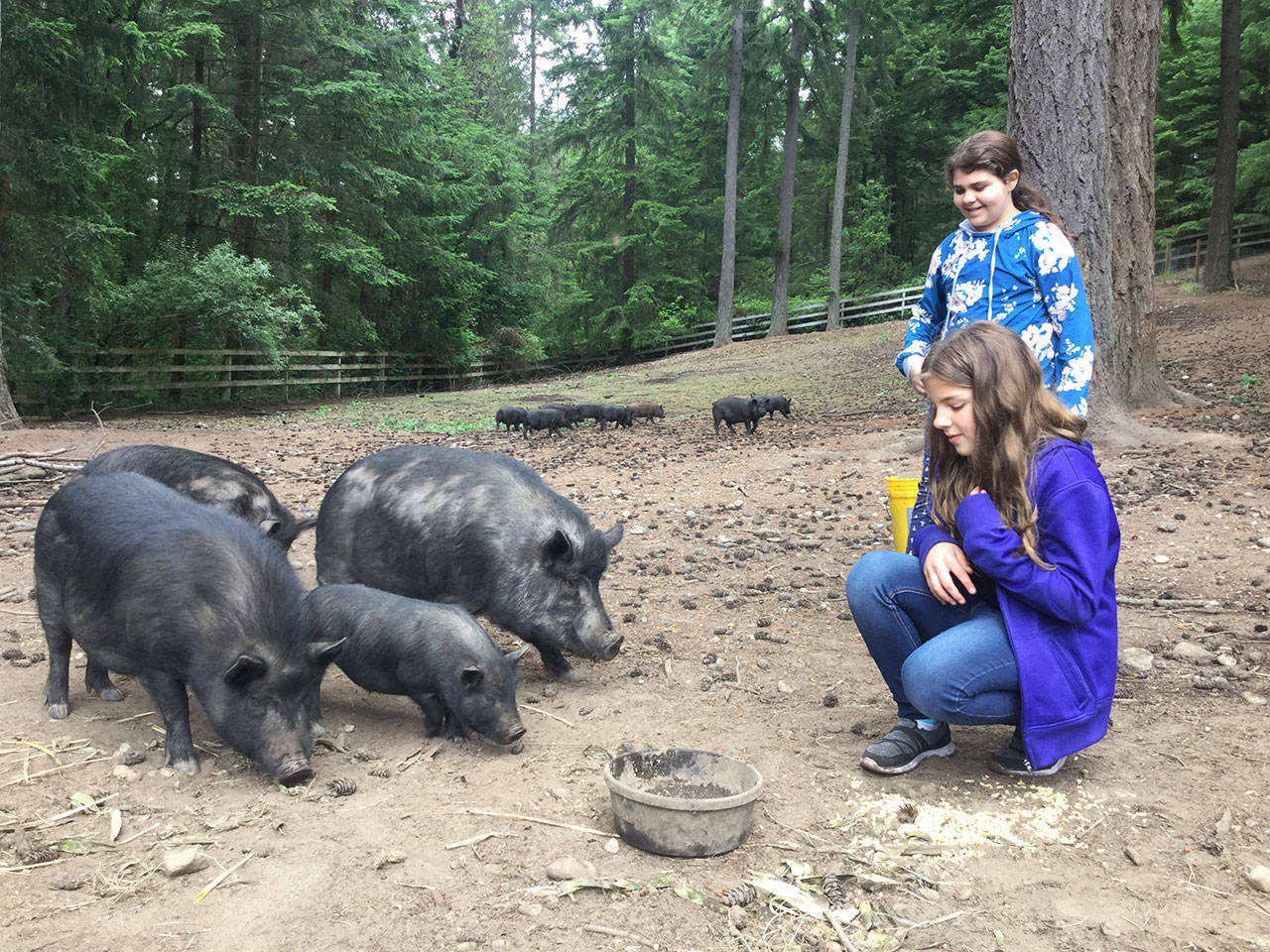As global crises of all kinds are coming to a head for humanity, students at Chautauqua Elementary School have taken matters into their own hands, literally, in an effort to stem the flowing tide of waste currently threatening to suffocate the planet.
Every year, the school’s third graders learn about various issues — global, national and local — affecting islanders, and then choose one to focus on and take action. This year, with an ever-growing list to choose from, the students became interested in waste and recycling after a couple of newspaper stories caught their attention. And subsequent to a meeting with representatives from Zero Waste Vashon, Chautauqua third-grade teacher Marjorie Butcher said that her young pupils were horrified to learn that Vashon’s number one export is trash and waste.
So they decided to do something about it.
Ultimately, with each of the classes taking different approaches, her class decided to focus on reducing waste at school — coming up with four projects that the whole school could take part in, three that required some funding and one that did not.
Getting funding for “project pig bins,” “no paper trays” and “operation switcheroo,” as dubbed by the class, required the kids to write and apply for grants from Vashon’s Partners in Education (PIE) Appleford Enrichment Fund — provided for by a donation from the estate of islander Robin Appleford, specifically for educational projects focused on civics and community or the environment and ecosystems.
The funding was approved late last month.
Two of the four projects were conceived directly from research the class did that involved studying the Environmental Protection Agency’s Food Recovery Hierarchy, which is essentially an upside down pyramid that recommends, like the Food and Drug Administration’s Food Pyramid for human nutrition, the optimal flow of food waste. According to the EPA’s recommendations, the first priority is simply to reduce the amount of food waste generated, second is to feed hungry people by donating excess food to food banks or shelters, third is to feed animals, fourth to look for potential industrial uses such as waste oils for alternative fuel and scraps for digestion and energy recovery, then composting for soil amendment, which falls just before sending food waste to a landfill.
Initially the students were focused on the first level of the hierarchy and the fifth, looking at the overall reduction of food waste, and something that would involve composting for soil amendment.
“They came up with a fabulous plan to reduce food waste at school,” Butcher said. “It was an incentive where students could go to recess two minutes early if they ate all of their food. But they failed to convince the principal on that one. So they came up with an alternative plan, in which they will measure the school’s food waste daily (in inches) and graph it visibly in the lunchroom so that all of the kids can see how much is going to waste every day and hopefully be inspired to either eat all that they bring, or simply bring less.”
This project required no funding.
The composting idea, however, wasn’t quite sitting well with Butcher’s students, since it was so far down the list of preferred alternatives for where food waste should go before it ever ends up in a landfill. In its discussions with the food bank regarding compost for its garden, the class discovered that there is a woman on the island who picks up food scraps from the food bank every week because she uses them to feed her pigs. As feeding animals is higher up on the hierarchy of food waste distribution, a big, figurative light bulb went on for the class, which then contacted the woman who owns the pigs.
Islander Eileen Burke now not only collects food scraps from the food bank, but also from Chautauqua Elementary School to feed her pigs, and chickens, who, according to Butcher, eat what the pigs don’t like.
This is “Project Pig Bins” and the kids wrote a grant for funding for small food waste bins that could be placed in every classroom, as well as one large bin for each of the school’s three floors. At the end of each day, the kids empty their classroom bins into the large floor bins, and the large bins are taken to the lunch room so that Burke can pick them up.
Butcher’s students took a trip to visit Burke and her pigs recently.
The other two projects also required grant funding, but do not directly address the food waste hierarchy.
“No Paper Trays” is a simple project that has provided reusable plastic lunch trays for the school’s teachers. The students were already using plastic, washable trays, but the teachers only had paper trays — which added to the school’s overall waste stream, and as noted in recent recycling news, paper is one of the recyclables China will no longer accept due to a high incidence of contamination.
The final project, known as “Operation Switcheroo,” was created as a solution to waste items going into the incorrect receptacles. With the grant funding, Butcher’s students have created educational posters and provided each classroom with reusable rubber gloves so that the students can make certain that trash and recycling items are not in the wrong bins at the end of each day — ultimately, the hope is that the act of separating and re-distributing will help make the students more aware of using the correct receptacles in the first place.
“The kids are questioning everything,” Butcher said. “‘Why are we throwing away plastic bags from our lunches?’ ‘Why do we need this much food if we’re not eating it?’ It’s just been amazing to see the kids viewing the world differently because of these projects.”



